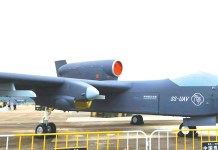The Galwan Valley clash between Indian and Chinese PLA troops has been published by Reuters. The report cites family members and soldiers deployed in the region and writes that Indian soldiers were unarmed and surrounded by a larger number of Chinese troops on a steep ridge.
One of the Indian soldiers had his throat slit with metal nails, his father told Reuters, saying he had been informed by a fellow soldier. Others fell to their deaths in the freezing waters of the Galwan river, families have heard from witnesses.
Reuters spoke to relatives of 13 of the men who were killed, and in five cases they produced death certificates listing dreadful wounds suffered during the six-hour night-time clash in the amid remote, barren mountains.
Chinese App Ban: Weibo Users Ask Indian PM Narendra Modi To Return $750M Loan Granted By China
Reuters contacted the military hospital in India’s Ladakh region where the bodies of Indian soldiers was brought. The hospital declined to comment on the cause of death and said that the bodies were sent to the families along with the death certificates.
Reuters also spoke to two soldiers of the Bihar Regiment stationed near the Galwan valley conflict site who were among those who brought the bodies of martyred soldiers to their homes in the area. They were not directly involved in the scuffle.
Japanese Analyst Rips-Apart China’s Double Game Of ‘Gentle Statements & Wicked Actions’
In response to a Reuters query, a China foreign ministry spokesperson repeated previous statements accusing the Indian side of intruding into the de facto border and provoking the Chinese troops.
“When Chinese officers and soldiers went there to negotiate, they were suddenly and violently attacked by the Indian troops,” the spokesperson said. “The rights and wrongs of the incident are very clear. The responsibility absolutely does not lie with the Chinese.”
CPEC Project A ‘Trillion-Dollar Blunder’, Pakistan Calls It ‘Outstanding Initiative’
Three of the killed Indian soldiers had their “arteries ruptured in the neck” and two sustained head injuries caused by “sharp or pointed objects”, according to the death certificates verified by Reuters. There were noticeable marks on the neck and forehead, all five documents said.
“It was a free-for-all, they fought with whatever they could lay their hands on – rods, sticks, and even with their bare hands,” said a government official in Delhi briefed on the clash.
The probability that unarmed Indian soldiers were overwhelmed by a larger force could further fuel resentment against China and raise questions about why Indian soldiers were sent to a tense frontline without being armed.
Galwan Valley Fight: Beijing Gives Step By Step Account Of India-China Border Clash At Galwan Valley
A relative of one of the soldiers who escorted Colonel Santosh Babu, the commanding officer, to the site of two tents erected by the Chinese troops told Reuters that members of the Indian patrol were unarmed.
They were confronted by a small group of Chinese PLA troops and an argument resulted over the tents and a small observation tower the relative said, on the basis of conversations with two other soldiers who were present.
Reuters was unable to establish all of the details of what happened, but government officials in New Delhi briefed on the Galwan Valley incident said that at some point Indian soldiers took down the observation post and the tents because they were on India’s side of the LAC.
India-China War: China Has No ‘Military Advantage’ Over ‘Battle-Hardened’ Indian Army – CNN
Soon after the Indian side came under attack from a large Chinese force that pelted them with stones and attacked them with sharp-edged weapons, according to the families of three dead Indian soldiers, based on conversations they had with survivors.
Some soldiers retreated to safety on the ridgeline in the darkness, but when they could not find the commanding officer, they re-emerged and came under fresh attack, four family members said. One of the soldiers deployed in the area that Reuters spoke to said the Indian patrol was outnumbered by the PLA.
How Many Chinese Soldiers Were Killed In The India-China Clash At Galwan Valley / Ladakh?
“The Chinese side overwhelmed our people by sheer numbers,” said the soldier, who overheard radio messages seeking reinforcements being sent to regional headquarters in Ladakh.
Three of the Indian families said they had been told by soldiers who were tasked to bring the bodies back to them that some soldiers pushed each other into the fast-flowing Galwan river. The government official in Delhi also said bodies of some soldiers were fished out of the river the next morning. Some had succumbed to hypothermia, the official added.
Original Report – Reuters




